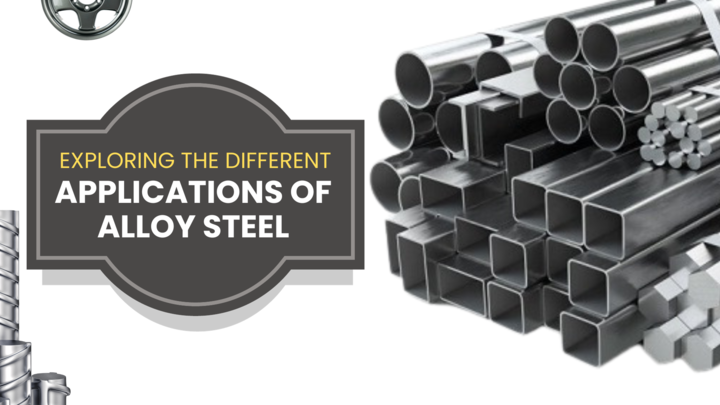Steel, a material known for its strength and versatility, can be further enhanced through the addition of alloying elements. Alloy steel is a remarkable material with a wide range of applications across various industries. In this blog, we’ll delve into the world of alloy steel, uncovering its unique properties and exploring the diverse ways it is used in our everyday lives.
What is Alloy Steel?
Alloy steel is a type of steel that is alloyed with other elements, such as manganese, nickel, chromium, molybdenum, or vanadium, to enhance its properties. These alloying elements impart specific characteristics to the steel, making it suitable for a variety of applications. The choice of alloying elements and their proportions determine the steel’s properties, including hardness, strength, corrosion resistance, and heat resistance.
Applications in the Automotive Industry
Alloy steel plays a critical role in the automotive industry. It is used to manufacture various components, including engine parts, axles, gears, and suspension systems. The high strength and wear resistance of alloy steel makes it ideal for ensuring the durability and safety of automobiles. Additionally, alloy steel’s heat resistance is crucial for components exposed to high temperatures, such as exhaust systems.
Aerospace Engineering
In aerospace engineering, where the demand for lightweight materials with exceptional strength and corrosion resistance is paramount, alloy steel shines. It is used to fabricate critical components like aircraft landing gear, engine parts, and structural elements. Alloy steel’s ability to withstand extreme conditions and provide structural integrity is vital for ensuring the safety of air travel.

Construction and Infrastructure
The construction and infrastructure sectors heavily rely on alloy steel due to its strength and durability. Alloy steel bars and structural components are used in the construction of buildings, bridges, and other infrastructure projects. The high tensile strength of alloy steel ensures the stability and longevity of these structures.
Oil and Gas Industry
Alloy steel’s resistance to corrosion and high-temperature environments makes it indispensable in the oil and gas industry. It is used in the manufacturing of pipes, valves, and drilling equipment. Alloy steel’s ability to withstand the harsh conditions of offshore drilling platforms and high-pressure oil wells is crucial for maintaining the integrity of these operations.
Manufacturing and Machinery
Machinery and manufacturing equipment often require components that can withstand heavy loads and continuous operation. Alloy steel is used to produce gears, bearings, shafts, and tooling for manufacturing processes. Its hardness, toughness, and wear resistance contribute to the efficiency and reliability of machinery across various industries.
Cutting Tools and Blades
Alloy steel is the material of choice for the production of cutting tools and blades. Whether in the form of high-speed steel (HSS) or tool steel, alloy steel’s hardness and heat resistance make it ideal for cutting, drilling, and shaping other materials. This is critical in industries like metalworking, woodworking, and machining.

Medical Instruments and Implants
In the medical field, alloy steel is used to manufacture surgical instruments and implants. Its biocompatibility, corrosion resistance, and strength make it suitable for applications such as orthopedic implants, dental instruments, and surgical scalpels. Alloy steel’s precision and reliability are essential in medical procedures where accuracy is paramount.
Conclusion
Alloy steel’s versatility, strength, and resistance to wear, corrosion, and high temperatures make it a valuable material across a wide range of applications. From the automotive industry to aerospace engineering, construction, and healthcare, alloy steel’s properties contribute to the reliability, safety, and efficiency of countless products and processes. As technology continues to advance, we can expect even more innovative uses for this remarkable material in the future.





